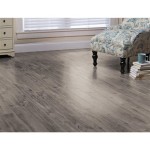In Style Home Decor 2022: Key Trends and Influences
The year 2022 saw a dynamic shift in home decor preferences, influenced by global events, evolving lifestyles, and a renewed focus on personal wellbeing. Several significant trends emerged, shaping interior spaces into havens of comfort, functionality, and individual expression. This article explores the key drivers and dominant styles in home decor during 2022, providing an overview of the evolving aesthetics that defined the year.
One of the most significant factors impacting home decor in 2022 was the continued influence of the pandemic. With many individuals spending more time at home, the emphasis shifted towards creating spaces that were not only aesthetically pleasing but also conducive to work, relaxation, and overall wellbeing. This led to a greater demand for multifunctional furniture, flexible layouts, and decor that promoted a sense of calm and tranquility.
Sustainability also continued to be a major driver of trends. Consumers became increasingly conscious of the environmental impact of their choices, leading to a greater demand for eco-friendly materials, upcycled furniture, and sustainable practices. This trend extended beyond the materials themselves, encompassing manufacturing processes and ethical sourcing.
Technological advancements further permeated the home decor landscape. Smart home technology became more accessible and integrated, allowing for greater control over lighting, temperature, and security. This integration of technology aimed to enhance convenience, efficiency, and overall comfort within the living space.
Biophilic Design: Bringing the Outdoors In
Biophilic design principles gained significant traction in 2022, reflecting a growing desire to connect with nature within the built environment. This approach emphasizes the incorporation of natural elements such as plants, natural light, and organic materials into interior spaces. The goal is to create a sense of harmony and wellbeing by mimicking the restorative effects of nature.
Live plants played a central role in biophilic design. From small potted succulents to large statement trees, greenery became an essential element in almost every room. Plants not only added visual appeal but also improved air quality and reduced stress levels. Vertical gardens and green walls were also popular choices, particularly in smaller spaces, providing a lush and space-saving alternative to traditional potted plants.
Natural light was another key element. Designers focused on maximizing natural light exposure through the use of large windows, skylights, and reflective surfaces. Light-colored walls and minimal window treatments were also employed to enhance the brightness and airiness of interior spaces.
Organic materials, such as wood, stone, bamboo, and rattan, were also widely used to create a natural and earthy feel. These materials added texture and warmth to interiors, contributing to a sense of tranquility and connection to the natural world. Furniture made from reclaimed wood and other sustainable materials was particularly popular.
Color palettes inspired by nature were also a hallmark of biophilic design. Earthy tones, such as greens, browns, and blues, dominated interior spaces, creating a sense of calm and serenity. Accent colors, such as yellows and oranges, were used sparingly to add pops of energy and vibrancy.
Maximalism's Return: Embracing Bold Expression
In contrast to the minimalist aesthetic that had dominated recent years, 2022 saw a resurgence of maximalism. This trend embraced bold colors, intricate patterns, and eclectic collections, celebrating individuality and personal expression. Maximalist interiors were characterized by a sense of abundance and visual richness, showcasing a curated collection of cherished objects and personal treasures.
Bold colors were a key element of maximalist design. Rich jewel tones, such as emerald green, sapphire blue, and ruby red, were frequently used to create dramatic and opulent spaces. Walls were often painted in vibrant hues or adorned with patterned wallpaper. Color clashing, a deliberate combination of seemingly incompatible colors, was also embraced as a way to add visual interest and personality.
Intricate patterns were another defining feature of maximalist interiors. Floral prints, geometric designs, and animal motifs were combined in unexpected ways to create a visually stimulating and layered effect. Patterned rugs, cushions, and curtains were used to add texture and depth to the space.
Eclectic collections of art, antiques, and personal objects were showcased prominently in maximalist interiors. Shelves, walls, and surfaces were adorned with a curated assortment of items that reflected the homeowner's personality and interests. This eclectic mix of objects added character and individuality to the space, creating a sense of warmth and authenticity.
Layering was a key technique in maximalist design. Furniture, textiles, and accessories were layered on top of each other to create a sense of depth and visual richness. This layering effect added to the overall sense of abundance and opulence that characterized maximalist interiors.
Multifunctional Spaces: Adapting to Evolving Lifestyles
The increasing demand for flexible living spaces led to a greater emphasis on multifunctional design in 2022. Homes were increasingly viewed as spaces that needed to adapt to a variety of activities, from working and learning to relaxing and entertaining. This required innovative design solutions that maximized functionality and adaptability.
Multifunctional furniture was a key component of this trend. Sofas that converted into beds, coffee tables that transformed into dining tables, and storage units that doubled as room dividers were all popular choices. These pieces allowed homeowners to easily adapt their living spaces to different needs and activities.
Flexible layouts were also essential for creating multifunctional spaces. Open-plan living areas were often divided into distinct zones using furniture, rugs, or screens. This allowed for a sense of separation and privacy while still maintaining a connection between different areas of the home.
Smart storage solutions were also crucial for maximizing the functionality of smaller spaces. Built-in shelving, hidden compartments, and vertical storage systems were used to keep clutter at bay and create a sense of order. These storage solutions helped to maximize the available space and create a more efficient and organized living environment.
Adaptable lighting was another important consideration. Dimmable lights, task lighting, and accent lighting were used to create different moods and atmospheres within the same space. This allowed homeowners to easily transition from a bright and energizing workspace to a cozy and relaxing living area.
The color palette played a role in designing multifunctional spaces. Neutral color schemes, such as grays, whites, and beiges, were often used as a backdrop, allowing for greater flexibility in terms of furniture and accessories. Pops of color were added through artwork, cushions, and other decorative items, allowing homeowners to easily change the overall look and feel of the space.
In conclusion, the home decor landscape of 2022 reflected a dynamic interplay of trends, driven by global events, evolving lifestyles, and a growing awareness of sustainability and wellbeing. These key influences shaped interior spaces into personalized havens, blending functionality, aesthetics, and individual expression.

Living Room Trends 2025 What S New In Home Comfort And Style Decorilla Interior Design

20 Interior Design Trends 2025 Must Have Looks You Ll Love Decorilla

2025 S Hottest Interior Design Trends To Reinvent Your Home Decor
Check Out These 20 Interior Design Trends For 2025 Inspirations Essential Home
Check Out These 20 Interior Design Trends For 2025 Inspirations Essential Home

Living Room Trends 2025 What S New In Home Comfort And Style Decorilla Interior Design

2025 Interior Design Trends And How To Thrift For Them

2025 Interior Design Trends And Home Decor Ideas You Will Love Jane At
154 Designers On 2025 Home Decor Trends These Are Their Predictions

The Future Of Home Design Trends To Watch In 2025
Related Posts







